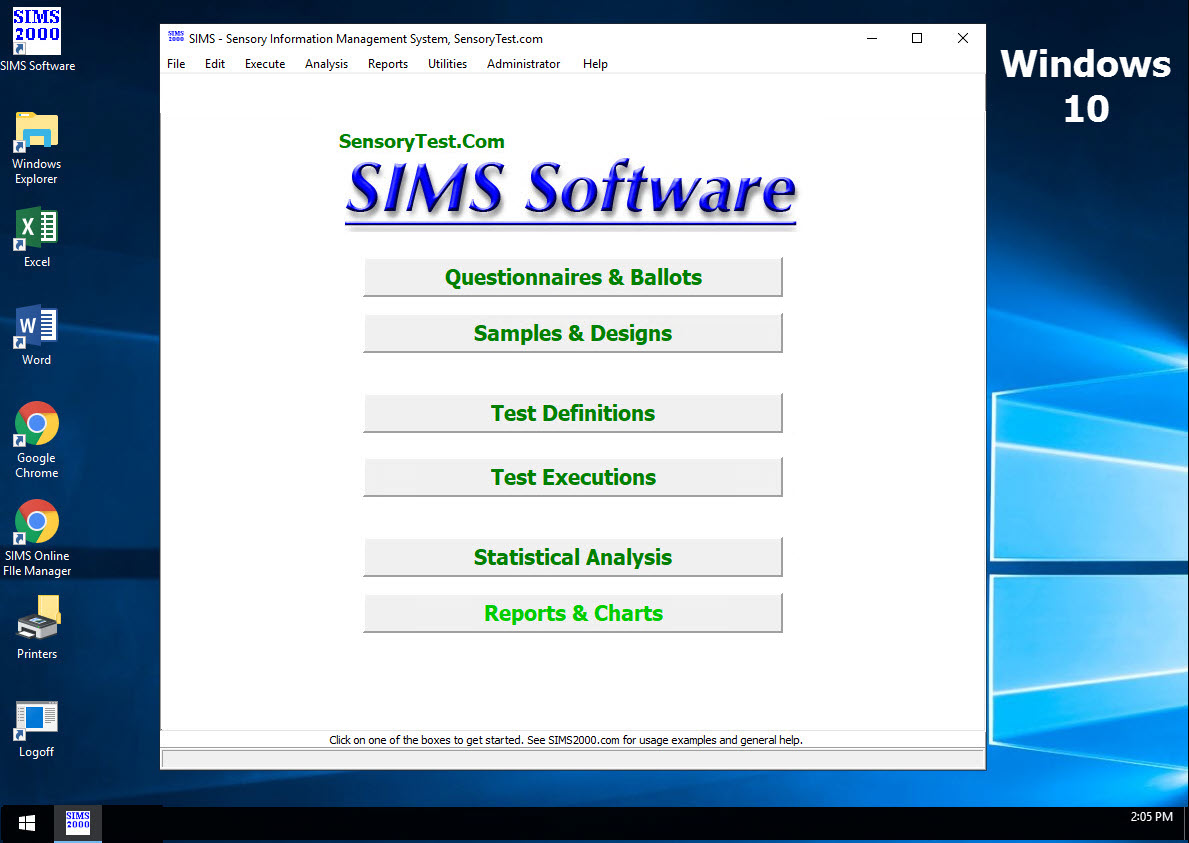
 HOME
HOME CONTACT
CONTACT SUPPORT
SUPPORT SENSORYTEST.COM
SENSORYTEST.COM |
 HOME HOME CONTACT CONTACT SUPPORT SUPPORT SENSORYTEST.COM SENSORYTEST.COM |
|
Sensory testing professional's favorite virtual desktop. Say hello to SIMS Cloud Systems. From any device, any laptop, any iPad and even your cell phone. Log in from anywhere anytime. Inquire today. 
|
Mobile devices real test example Point your cell phone camera Easy for your respondents 
Link |
 VIEW REPORTS
VIEW REPORTS |
 QUESTION CHOICES
QUESTION CHOICES |
 TEST CHOICES
TEST CHOICES |
 Taming sensory testing
Flexible automation
One of the latest automation options for sensory information management to be developed in the USA is a programme designed to save time and costs by fully automating sensory testing and integrating all phases, including design, execution and analysis functions, into a simple and flexible software programme. The Sensory Information Management System (SIMS) has been designed by sensory professionals and testers and launched by Sensory Computer Systems of East Hanover, New Jersey. A completely flexible programme for the design, administration, collection and analysis of sensory test data, it allows non-technical personnel to create, run and analyse a wide variety of sensory tests without reliance on external programmers. Designed to require minimal capital invesUnent, SIMS can be run on most popular hardware platforms and can be configured to fit any existing sensory environment. It can be installed easily on existing network servers or supplied as a complete turakey system with all necessary hardware and software and packaged with a variety of optional components. Starting with the design for descriptive, affective, discrimination and consumer tests, SIMS allows users to work in an easy 'question and answer' format to specify sensory test standards including presentation methods, rotation plans (both complete and incomplete block designs), and randomisation. Menus and pop-up lists help simplify complex user choices. Once a test is designed, test administrators can conduct a sample session directly at their workstations allowing them to quickly identify problems and refine test procedures. The SIMS method of automating data collection is designed to speed input, reduce errors by both testers and sensory technicians, and improve data quality by eliminating keypunch errors and avoiding missing data. Test administrators no longer have to spend valuable time inputting and analysing test results, and as soon as a test is completed the system provides instantaneous results in a variety of report formats and graphs. |